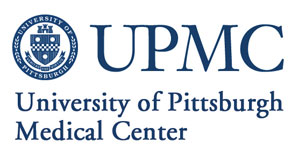A Prospective Study on the Tolerability and Efficacy of the de Novo Use of Myfortic in Liver Transplant Recipients
| Status: | Completed |
|---|---|
| Conditions: | Infectious Disease |
| Therapuetic Areas: | Immunology / Infectious Diseases |
| Healthy: | No |
| Age Range: | 18 - 80 |
| Updated: | 3/10/2017 |
| Start Date: | November 2006 |
| End Date: | November 2008 |
The objective of this study is to compare the safety and efficacy of Myfortic with CellCept
in liver transplant patients. Myfortic and CellCept are both immunosuppressive
(anti-rejection) drugs. CellCept is commonly used after liver transplantation but
gastrointestinal (GI) side effects are very common, sometimes necessitating in its
discontinuation. Myfortic is a new drug similar to CellCept, except it is enteric-coated.
Our hypothesis is that Myfortic has less GI side effects than CellCept and also has
comparable effectiveness to CellCept.
in liver transplant patients. Myfortic and CellCept are both immunosuppressive
(anti-rejection) drugs. CellCept is commonly used after liver transplantation but
gastrointestinal (GI) side effects are very common, sometimes necessitating in its
discontinuation. Myfortic is a new drug similar to CellCept, except it is enteric-coated.
Our hypothesis is that Myfortic has less GI side effects than CellCept and also has
comparable effectiveness to CellCept.
This is a prospective, randomized, double-blinded, single center, safety and efficacy study
comparing Myfortic with CellCept used after liver transplantation. Patients with
biopsy-proven acute cellular rejection, renal insufficiency (i.e. acute or chronic renal
failure requiring hemodialysis or patients with creatinine clearance < 50 ml/min), or
calcineurin inhibitor-induced neurotoxicity (defined as the presence of neurologic symptoms
such as tremors, altered mental status, seizures, etc) will be randomized to start on either
Myfortic (720 mg po bid) or CellCept (1 gm po bid). In those patients with
calcineurin-induced neurotoxicity or nephrotoxicity, tacrolimus or cyclosporine doses will
also be reduced to maintain serum trough levels of 4-8 mg/dl or 100-200 mg/dl, respectively.
Comparison: Thirty patients will be enrolled and randomized in this two-armed,
double-blinded study— half of the patients will receive Myfortic and the other half,
CellCept.
comparing Myfortic with CellCept used after liver transplantation. Patients with
biopsy-proven acute cellular rejection, renal insufficiency (i.e. acute or chronic renal
failure requiring hemodialysis or patients with creatinine clearance < 50 ml/min), or
calcineurin inhibitor-induced neurotoxicity (defined as the presence of neurologic symptoms
such as tremors, altered mental status, seizures, etc) will be randomized to start on either
Myfortic (720 mg po bid) or CellCept (1 gm po bid). In those patients with
calcineurin-induced neurotoxicity or nephrotoxicity, tacrolimus or cyclosporine doses will
also be reduced to maintain serum trough levels of 4-8 mg/dl or 100-200 mg/dl, respectively.
Comparison: Thirty patients will be enrolled and randomized in this two-armed,
double-blinded study— half of the patients will receive Myfortic and the other half,
CellCept.
Inclusion Criteria:
- ALL patients will be adult liver transplant recipients, males or females, 18-80 years
of age.
- Patients must be 30 to 180 days (1 to 6 months) post-transplant to be eligible.
- Patients currently receiving tacrolimus or cyclosporine with or without
corticosteroids as part of their immunosuppressive regimen.
- Patients with renal insufficiency (history of renal insufficiency or renal failure in
the past, patients on hemodialysis, patients with a rising creatinine
post-transplant).
- Patients with biopsy-proven acute cellular rejection (mild, moderate, or severe based
on Rejection Activity Index (RAI) as graded by pathologists at UPMC) or repeated
bouts of rejection (greater than 2 episodes within a 30 day period).
- Patients with tacrolimus- or cyclosporine-induced neurotoxicity.
- Females of childbearing potential must have a negative serum pregnancy test prior to
the inclusion period.
Exclusion Criteria:
- Multi-organ transplant patients.
- HIV positive patients.
- Living-related liver transplant recipients
- Pregnant patients and nursing mothers.
- Patients with a history of extra-hepatic malignancy within the last five years,
except excised squamous or basal cell carcinoma of the skin.
- Patients with thrombocytopenia (<50,000/mm3), with an absolute neutrophil count of
<1,000/mm3 and/or leukocytopenia (<2,000/mm3), and/or hemoglobin <7.0 g/dL prior to
enrollment.
- Presence of clinically significant infection requiring continued therapy, severe
diarrhea, active peptic ulcer disease, or uncontrolled diabetes mellitus.
- Evidence of drug and/or alcohol abuse.
- Decisionally impaired subjects who are not medically or mentally capable of providing
consent themselves
We found this trial at
1
site
University of Pittsburgh Medical Center UPMC is one of the leading nonprofit health systems in...
Click here to add this to my saved trials
